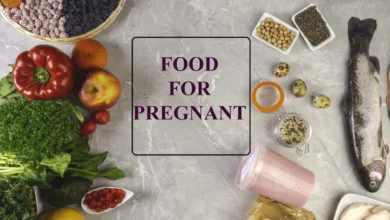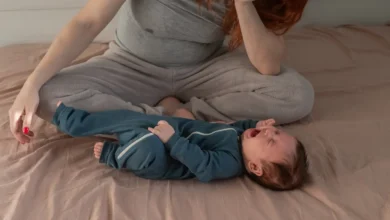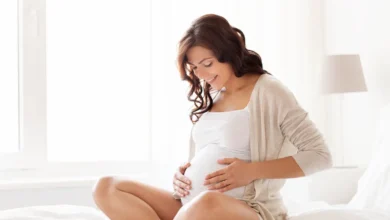The Real Reasons Babies Jab in the Womb
Understanding Baby Movements: Why Do They Jab in the Womb?
The first time you feel your baby move is one of the most magical experiences during pregnancy. These tiny flutters quickly turn into stronger kicks and jabs. The Real Reasons Babies Jab in the Womb are not just random movements; they are crucial to the baby’s growth. Have you ever wondered what makes babies move so much in the womb? These movements may be more than just stretching; they are crucial to the baby’s growth.
Mapping Movement
Recent studies have shown that the baby’s movements in the womb are more important than we previously believed. These kicks and jabs during the first few months of life are vital for brain development. They help the baby to create an internal map.
Researchers believe that fetal movements are important in establishing neural connections. The brain of the baby begins to link different body parts to specific movements. This sets the foundation for sensory development and motor skills after birth. These movements help the brain build a foundation for touch and movement. These are crucial skills that will continue to be refined once the baby is born.

The Transition From Womb to World
The familiar internal movements and kicks are replaced with external interactions after birth. The baby is exposed to new sensations such as being held and touched.
These findings are important for neonatal health, particularly for premature babies. Understanding the role of fetal movements in brain development can help medical professionals create environments that mimic the womb and promote optimal growth for premature babies. Researchers believe that wrapping premature infants in a manner that mimics the womb can help them develop neural networks.
The Science Behind Building Little Brains
In a small-scale study, scientists examined the brain activity of newborns, including premature infants, using non-invasive electroencephalograms (EEGs). The scientists found that the early movements during pregnancy create pathways that are later refined by post-natal experiences. These movements are the foundation for physical coordination, reflexes, and sensory development.
If your baby appears to be very active in the womb, they’re not playing. They are actively building brain connections that will be needed for life after the womb.
Fetal Movements During Pregnancy
The fetal movements are the movements of the baby’s muscles inside the womb. These movements start as small reflexes, and over time become more coordinated.
Fetal Movements
The intensity and type of fetal movements can vary. Expectant mothers can notice:
- Fluttering: gentle, butterfly-like movements
- Kicks & Jabs: more pronounced and powerful movements
- Wriggling and Rolling: the baby changing position
- Hiccups: Repetitive, rhythmic movements
The different types of movements represent different stages of development.
Development of Fetal Movements
The fetal movements are based on a timeline of development and become more complex as pregnancy progresses.
- Before nine weeks: As the baby’s nervous system develops, all of its limbs move in harmony.
- 9 weeks Yawning is visible on ultrasound.
- At 10 weeks, the baby starts to make sudden movements and separate limb movements.
- 11 Weeks The baby can open his mouth and sucking its fingers.
- At 12 weeks, the baby begins to swallow amniotic fluid.
- After 13 weeks, the first kicks, jabs, and skin-contact responses begin.
- Between 14 and 20 weeks, the first fetal movements (also known as “quickening” or “shaking”) are usually felt.
- 20 to 36 weeks: The movement patterns become stronger and more frequent.
- At 28 weeks, the startle reflex is developed. Babies react to sudden movements or loud noises.
- Trimester Babies are practicing leg movements for birth positioning.
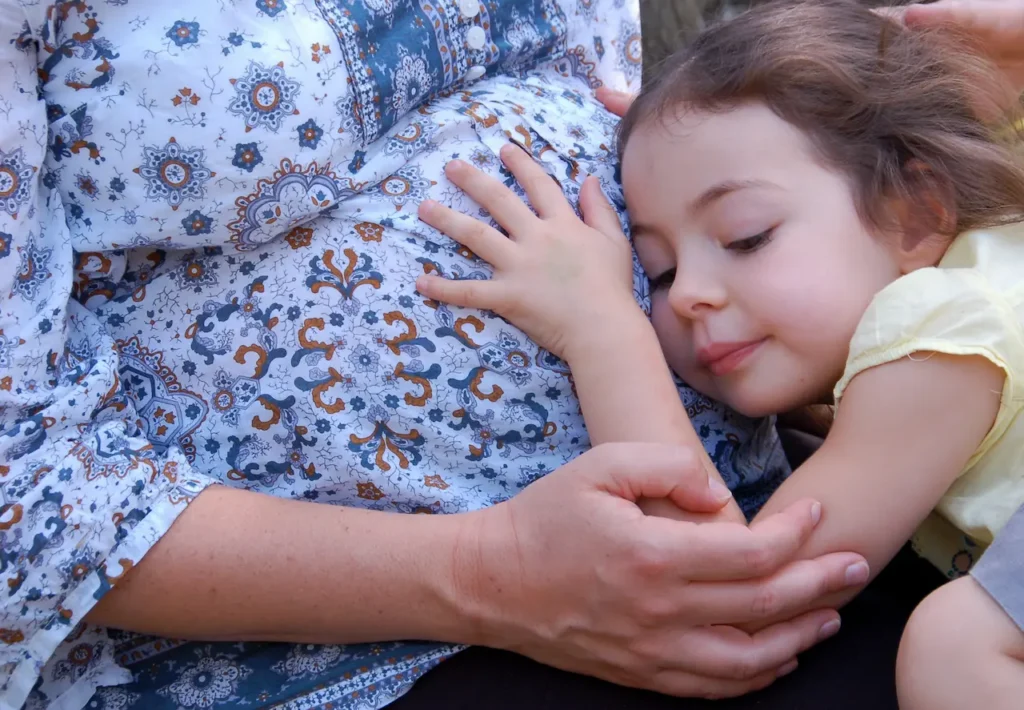
Fetal Activity Patterns
The fetal movements are predictable throughout the pregnancy. In the beginning, movements are mild, but in the third trimester, they become more pronounced. As the baby grows in size, the space available in the womb is reduced, leading to fewer, but more noticeable movements.
You might also like: Coping with the Baby Blues After Birth
Rhythms of Fetal Activity
Babies do not move continuously, but they follow a rhythm that is influenced by
- Time: The peak activity period is usually between 9 AM-12 AM and 7 PM-4 AM.
- Sleep Cycles: Babies’ sleep patterns don’t always match those of their mothers.
- Position: The mother’s position is important.
- Food Intake: Food can temporarily increase fetal activities.
Perception Of Fetal Movements
When lying on the left side, or in a relaxed sitting position, mothers can feel fetal movement better. Certain factors, however, can influence the perception of movement.
- Low levels of amniotic fluid
- Maternal Obesity
- Anterior placenta placement
- Alcohol or smoking
- First pregnancies with tighter abdominal muscles
Reduced Fetal Movement & Kick Counts
Monitoring fetal activity is important, particularly in the third trimester. The “kick-count” method can be helpful:
- How long does it take to feel 10 different movements?
- After eating, lie on your left and count for 10 to 15 minutes.
- In general, it is normal to have more than 10 movements per 2 hours.
Causes of decreased fetal movement
If you notice a decrease in fetal movements, it could be a sign of underlying problems such as:
- Intrauterine growth restriction (IUGR)
- Placental insufficiency
- Low levels of amniotic fluid
- Preterm labor
- Infections and fetal distress
Reduced fetal movements are associated with risks including:
- Preterm birth
- Congenital anomalies
- Cerebral palsy
- Low birth weight
- Neonatal death
A mother should immediately contact her doctor if she notices that the fetal movements have decreased significantly.
When can you feel your baby move?
The fetal movement pattern varies, but the majority of mothers will feel the kicks between weeks 18-22. Due to their increased sensitivity, women who have previously had pregnancies are more likely to notice movement sooner.
The position of the placenta can also play a part. If the placenta lies in front (anterior position), it may be more difficult to feel movements. A mother may need an ultrasound if she hasn’t experienced any movement at the end of her fifth month.
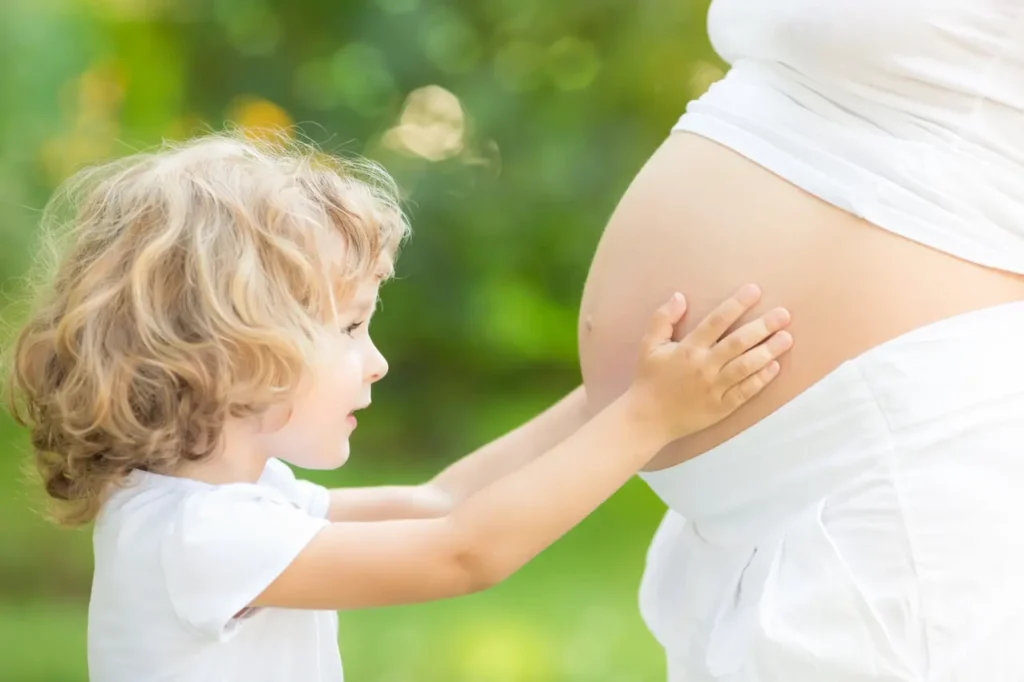
What Does it Feel Like to Kick a Baby?
The baby’s movements can be like:
- Fluttering
- Waves (like a fish swimming)
- Twitches and nudges
- Bubble Popping Sensations
- Gentle rolling or sudden jabs
As the baby grows up, its movements become stronger and more noticeable. Every baby is different, and therefore, movement patterns will vary.
How often should you feel your baby move?
By the third trimester most mothers will be able to count daily movements. It is important to be aware of the baby’s usual movement pattern and to report any significant differences.
When do babies move the most?
Babies are more active than adults:
- At Night: Many mothers feel more active when they are relaxing.
- After eating, an increase in blood sugar may temporarily increase activity.
- Adrenaline can stimulate the baby when the mother is anxious.
- When experiencing hiccups. Rhythmic movements that last a few minutes can indicate hiccups.
Conclusion
One of the most thrilling aspects of pregnancy is feeling a baby move in the womb. These movements are essential for the baby’s development of brain connections necessary for life after the womb. Expectant mothers who monitor changes and understand fetal movements can feel closer to their babies and ensure their health.
